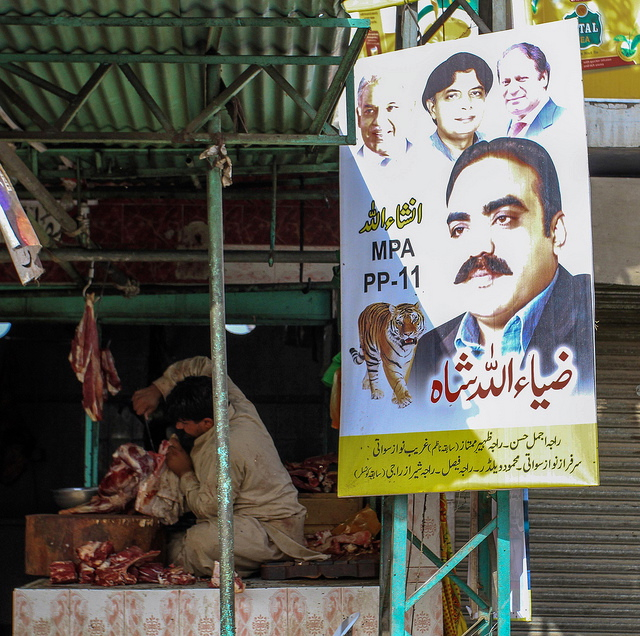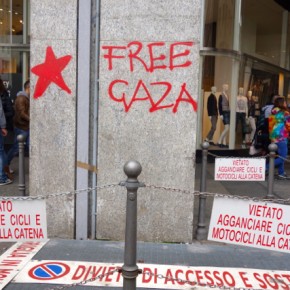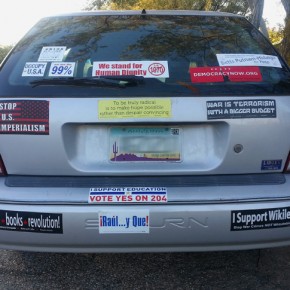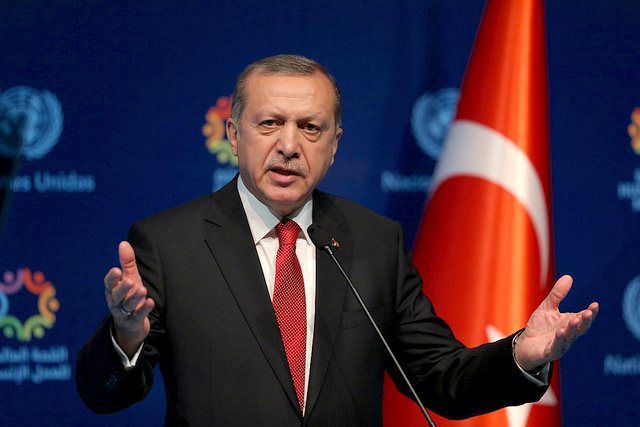I arrived in Pakistan during Tahir ul-Qadri’s widely promoted Long March. Landing in Islamabad, I was ushered through side roads to see my mother in Rawalpindi. She told me that it would be impossible to get anything done for days, as ul-Qadri had effectively shut down the capital.
Security forces were deployed en masse, highways were shut down, mobile service was suspended, schools and many businesses were closed. Even the Internet was inaccessible.
Due in part to ul-Qadri’s ties to General Musharraf, Pakistan’s leadership was not willing to take chances. The message that he broadcasted in January was not to be taken lightly:
Pakistan’s apathetic politicians have no real interest in addressing the country’s miserable economy, ongoing energy crisis, endless violence, and a relationship with the United States so subordinate that President Obama was able to order a raid into Abbotobad without anyone in Pakistan being consulted. If only the message had been taken seriously, this weekend’s election results might have been less predictable.
As predicted, Pakistan Muslim League leader Nawaz Sharif is back in the leadership position he has occupied twice before. Sharif’s brother Shabbaz Sharif, who ran the provincial government of Punjab for several years, staged an unofficial campaign by spending a great deal of public finances on infrastructure projects in Lahore. The projects were popular throughout the province, and gave the industrialist brothers a reputation for accomplishment.
Much of this was underserved, considering that Nawaz Sharif has been a politician in Pakistan since the era of General Zia ul-Haq, and is more prone to pursuing business interests than social policy. However, this surge in popularity was orchestrated to combine with widespread anger against the ruling Pakistan People’s Party. The PPP, an avowedly socialist party that has become a fiefdom for the liberal-minded Bhutto family, became so unpopular that the electorate swept the competing Sharif dynasty into power. Election violence in Karachi, allegations of fraud, and extremely vague praise for this “historic step” in Pakistan’s history are all equally predictable. They are flash points in the greater farce that is this exchange of power.
On March 24th, General Pervez Musharraf returned to Pakistan in order mount a civilian campaign. His court-declined comeback, which has now resulted in his arrest pending trial, illuminated major problems in the democratic process. Since Pakistan’s elections are dominated by intrigues such as deals with elites and seat-leveraging schemes, Musharraf had a strong opportunity to play a role in the next government. The mechanisms that made this possible formalize the fact that Pakistan’s civilian-military elite negotiates political changes among itself. The elections that do occur are more or less formalities that officialize this process.
Pakistani elites have always used national institutions as a platform for debating and consolidating their own interests. It should therefore be no surprise that a government based on such intrigues would result in Pakistan’s rank of 139 in the Corruption Perceptions Index, rolling power outages that can be as long as eighteen hours, and massive social inequality, in which Nawaz Sherif and the outgoing President Asif Zardari are billionaires, but millions of Pakistanis live in poverty.

Pakistan’s shifts between civilian and military rule have occurred without any impact on this culture. It is entrenched. This is precisely why it was was targeted by cricketeer-turned-politician Imran Khan. Unsurprisingly, this is also, at least partially, to account for his party Pakistan Tehreek-Insaaf’s third-place finish in Saturday’s poll. It will take more than one election to unseat the country’s political establishment.
There have been few discussions of problems with Pakistani democracy in international media. Pakistan is mainly covered for its role in being a cross-border shelter for the insurgency against the NATO occupation of Afghanistan; though sometimes, this includes sectarian violence. The idea that such problems may be a reflection of the country’s misrule by its military-financial elites is rarely a subject of debate.
Still, foreign analysts have a frustrating tendency to localize Pakistani dysfunction to problems inherent in the country’s religious culture. Much of this is the reflection of Islamophobia, particularly since the advent of the War on Terror twelve years ago. More broadly, it is motivated by a drive to ignore that a major cause of Pakistan’s instability is the persistence of social inequality, which has mushroomed in recent decades.
Economic crises have caused Pakistanis to regard each other with suspicion, helping drive them to ties more ancestral and legitimate than rational and, as it were, political. Ethnic associations with the correct elites is crucial to maintaining access to state resources, which results in well-documented tensions between Pakistan’s minorities. They’re competitors for both resources, and national identity, in a shakily-defined Islamic Republic.

This situation is worsened by the fact that nationalism is routinely proscribed as the best palliative by Pakistani elites. The medicine tends to take two forms: one that is focused against India, and another that is specifically Sunni-Salafi nationalist. The former legitimizes the military, which promotes a mythology of an apocalyptic showdown with India. The latter directs popular anger towards minority populations such as Christians, who are disproportionately prosecuted by the country’s divisive Blasphemy Law. It has also allowed for other placating gestures by the country’s elite, such as when the government banned YouTube in Pakistan, following the backlash against the film “Innocence of Muslims.”
Under such conditions, the seeds of bloodshed are firmly planted, even before we consider American interventionism, and CIA drone strikes.
The election results clearly resolve little. Where do we go from here? The first order of business for Prime Minister Sharif is likely to negotiate a bailout by the International Monetary Fund, which will inevitably exacerbate Pakistan’s ecomic problems. Among the various issues his government faces is the fact that separatist parties have gained control of numerous seats in the troubled province of Balochistan, which has been the site of four military conflicts with the Pakistani government. His PML-N has also had little success in the Afghan frontier province of Khyber-Pakthunkhwa, where the PTI has resonated with Khan’s platform that was fiercely critical of the drone strikes. Sharif could soon face revolt, or outright war in Pakistan’s outlying provinces.
What of the country’s urban centers, which mobilized against General Musharraf in 2007? The main concern about Tahir ul-Qadri four months ago was linked to a longterm fear for Pakistan’s cosmopolitan-minded elite, the 1979 Iranian Revolution. It was anxious that ul-Qadri’s arrival could usher in a similar Islamic regime as that which took root in Iran.
Officials were not prepared to risk either a similar situation or the more likely scenario that popular dissatisfaction could quickly lead to mass revolt once again. Hence the benefits of the clampdown, not only for Pakistan’s political establishment, but also the Americans.
Although some coverage of ul-Qadri’s Long March were more sympathetic, others were quick to note that a Pakistani Spring is unnecessary because of the 2007 revolution. The perspective furthered by many US analysts was that future democratic movements in the country will mainly be pushes to reform existing political structures.
This reflects a deep anxiety about liberal republican democracy in Pakistan. Worries about the Long March were never totally about ul-Qadri himself. They emerge from a deep concern that as the country’s political leadership loses its legitimacy, Pakistan’s population may begin to pursue other possibilities.
This is exactly why any mass movement in the country, such as the Faisalabad loom workers strike of July 2010, is cracked down on quickly and severely. The Pakistani government fears that its own spring may emphasize economic issues which threaten to tear the country apart if not confronted. They have been successful. But, as cities such as Karachi continue to pursue unstable fiscal policies, social turmoil seems almost inevitable. It remains to be seen how this come about, or what will come of it.
Sharif, Bhutto and Awami National Party poster photos courtesy of Carol Mitchell. Published under a Creative Commons license.





